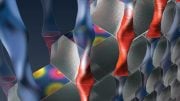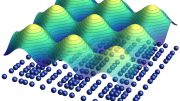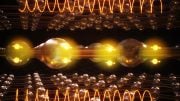
Researchers have successfully created new types of superconductors by arranging atoms one at a time, potentially leading to the development of innovative materials and quantum computing advancements. The study indicates a promising approach to overcoming the limitations of naturally occurring materials, paving the way for novel states of matter in future electronics and computing technologies.
Electronics of the future hinge on the discovery of unique materials. Sometimes, however, the naturally occurring topology of atoms makes it difficult for new physical effects to be created. To address this, scientists from the University of Zurich have now successfully designed superconductors one atom at a time, creating new states of matter.
What will the computer of the future look like? How will it work? The search for answers to these questions is a major driver of basic physical research. There are several possible scenarios, ranging from the further development of classical electronics to neuromorphic computing and quantum computers.
The common element in all these approaches is that they are based on novel physical effects, some of which have so far only been predicted in theory. Researchers go to great lengths and use state-of-the-art equipment in their quest for new quantum materials that will enable them to create such effects. But what if there are no suitable materials that occur naturally?
Novel approach to superconductivity
In a recent study published in Nature Physics, the research group of UZH Professor Titus Neupert, working closely together with physicists at the Max Planck Institute of Microstructure Physics in Halle (Germany), presented a possible solution. The researchers made the required materials themselves – one atom at a time.
They are focusing on novel types of superconductors, which are particularly interesting because they offer zero electrical resistance at low temperatures. Sometimes referred to as “ideal diamagnets”, superconductors are used in many quantum computers due to their extraordinary interactions with magnetic fields. Theoretical physicists have spent years researching and predicting various superconducting states. “However, only a small number have so far been conclusively demonstrated in materials,” says Professor Neupert.
Two new types of superconductivity
In their exciting collaboration, the UZH researchers predicted in theory how the atoms should be arranged to create a new superconductive phase, and the team in Germany then conducted experiments to implement the relevant topology. Using a scanning tunneling microscope, they moved and deposited the atoms in the right place with atomic precision.
The same method was also used to measure the system’s magnetic and superconductive properties. By depositing chromium atoms on the surface of superconducting niobium, the researchers were able to create two new types of superconductivity. Similar methods had previously been used to manipulate metal atoms and molecules, but until now it has never been possible to make two-dimensional superconductors with this approach.
The results not only confirm the physicists’ theoretical predictions, but also give them reason to speculate about what other new states of matter might be created in this way, and how they could be used in the quantum computers of the future.
Reference: “Two-dimensional Shiba lattices as a possible platform for crystalline topological superconductivity” by Martina O. Soldini, Felix Küster, Glenn Wagner, Souvik Das, Amal Aldarawsheh, Ronny Thomale, Samir Lounis, Stuart S. P. Parkin, Paolo Sessi and Titus Neupert, 10 July 2023, Nature Physics.
DOI: 10.1038/s41567-023-02104-5









Similar methods had previously been used to manipulate metal atoms and molecules, but until now it has never been possible to make two-dimensional superconductors with this approach. Do you really want to use three-dimensional atoms to create two-dimensional superconductors?
If you are really interested in science, you can browse https://zhuanlan.zhihu.com/p/624024548.
Throw in some imagination, the capability of building one single atom at a time is truly monumental the flow of electricity is exchange of electrons from one atom to another exchanges of electrons, in superconductor could it be accomplished in the single atom build as titanium atom placed then a carbon atom one after another to allow exchange between atoms without degradation of the integrity of the atom, the carbon atom used as a carrier between the two titanium atoms and aliening the spin, like a bridge between different atoms one electron from and a electron to or over to the next titanium atom.
That’s good achievement and thanks for your research and help us to get the correct information
Chromium over niobium by one atom at a timr